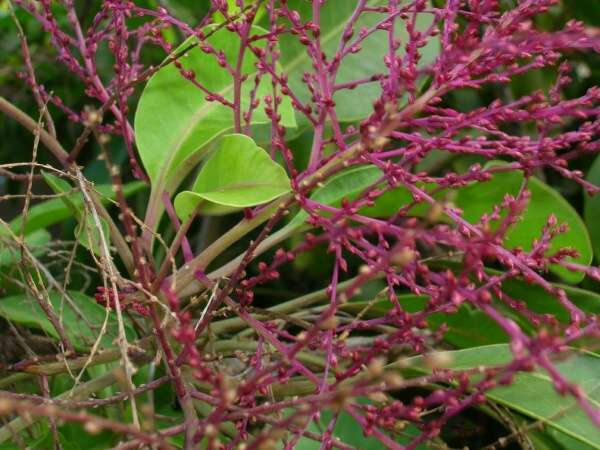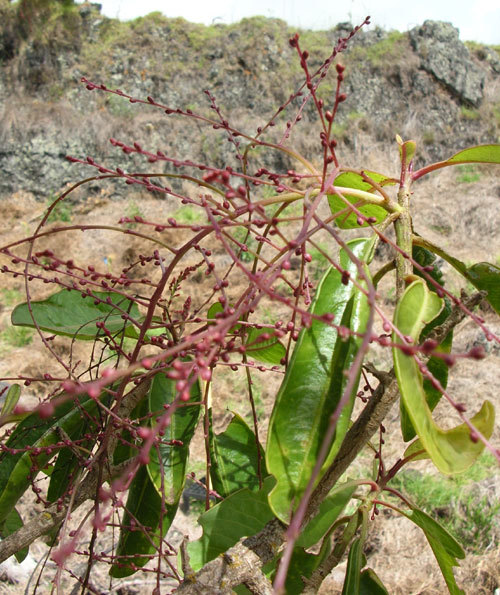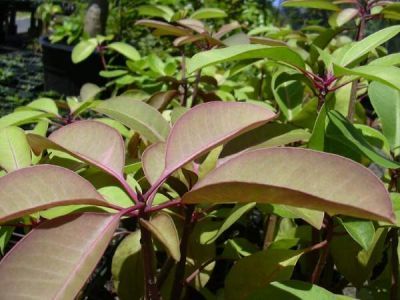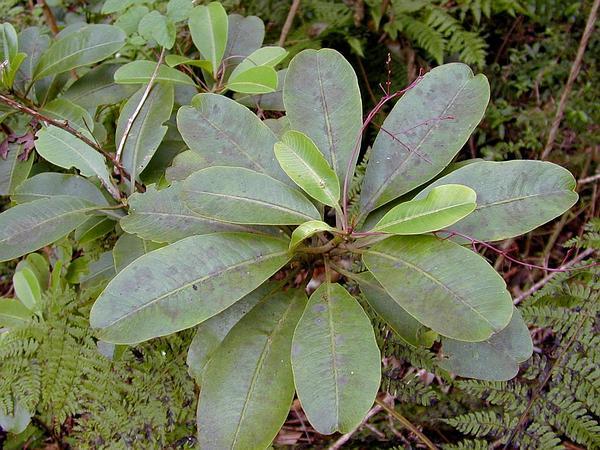Many native Hawaiian plants that have lived in relative obscurity are becoming better known, more available and even popular in local landscapes. Papala is a small tree, endemic to Hawaii with many desirable features. It makes an interesting addition to
Many native Hawaiian plants that have lived in relative obscurity are becoming better known, more available and even popular in local landscapes. Papala is a small tree, endemic to Hawaii with many desirable features. It makes an interesting addition to any garden.
Papala is also known as Hawaii’s pyrotechnic plant. The dried wood of the papala is light and very flammable. Ancient Hawaiians used the wood in a sport called “oahi,” where burning pieces were thrown off cliffs in high winds leaving a trail of fire as they fell and shooting sparks from the center as they burned. The living tree is an interesting addition to a small garden and its historical use for fireworks adds to its appeal.
Papala is one of six species of the genus Charpentiera, which all belong to the Amaranth family. Five of them are endemic to the Hawaiian Islands. Papala, Charpentiera obovata, is closely related to three species of Achyranthes and the rare Amaranthus brownii, as well as three species of kului. The 19th century French botanist Charles Gaudichaud-Beaupre gave the plant the generic name Charpentiera to honor a naval pharmacist and professor from the same era. The species name obovata describes its egg-shaped leaf with the stem attached at the narrow end.
Though papala is endemic to the Hawaiian Islands, the species is widespread, appearing in the mesic and wet forests of all islands. Hearty papala trees can tolerate conditions in locations from over 600 feet in elevation to 5,500 feet as long as there is adequate moisture.
Papala is a good choice for small gardens. It is an exotic looking shrub or small tree that grows up to 15 feet tall. It is distinguished by its large, egg-shaped leaves that can be up to five inches long with a marginal rib around the edge. Though older leaves are light green, new shoots are often a reddish-pink. The veins of the leaves can vary in color also from shades of green, to cream and yellow and even maroon, pink or purple. Papala flowers appear sporadically throughout the year. They are quite small but appear as a showy inflorescence on panicles that can be 12 to 18 inches long. The tiny flowers and their stems vary in color from yellow to dark red and appear on many dangling branches like tiny beads on a beaded curtain. The characteristics of papala’s leaves and flowers give the plant an unusual appearance, making it a good candidate as a single specimen or accent plant in a garden. Its small growth habit and wide canopy also make it suitable for hedging. The plants should not, however, be placed where hedge trimmers will cut their large leaves in unattractive ways. In a large garden or forested landscape, papala is well suited to serve as an understory shrub.
Following flowering, small single black seeds develop in fruit as small as the flowers and equally colorful. The seeds can be collected when they mature and fall off the plant. If kept dry, the seeds can be stored for a long time. To plant them, they should be sprinkled on a damp seeding mix and covered with about a quarter inch of the mix. Germination can take several months. Seedling should be moved to a larger pot with a mix that drains well after four to six true leaves have formed.
Propagating papala from cuttings is a bit easier. Both hardwood and softwood shoots can be used and they should root within three months. The plants in the Charpentiera genus will probably not be ready to plant out for about 12 months. An ideal site is one with partial shade and moist soil that drains well. Papala will also do well in full sun when it receives regular watering. It can also grow well as an indoor potted plant.
Aphids, spider mites, mealybugs and scale are potential pests of papala. Keeping the plant healthy and spraying with a solution of neem oil and safer soap can keep pests under control.
In addition to applying organic mulch in the root zone, applications of a balanced, slow-release fertilizer with minor elements every six months can help your plant thrive. Monthly foliar feedings with compost tea, kelp or fish emulsion will improve leaf production and help maintain overall plant health.
Though this plant is rather rare in the landscape industry, several nurseries may carry it or its close relatives. Call around or go to the Amy B.H. Greenwell Ethnobotanical Garden in Captain Cook. They presently have several specimens in stock.
Diana Duff is a local organic farmer, plant adviser and consultant.






